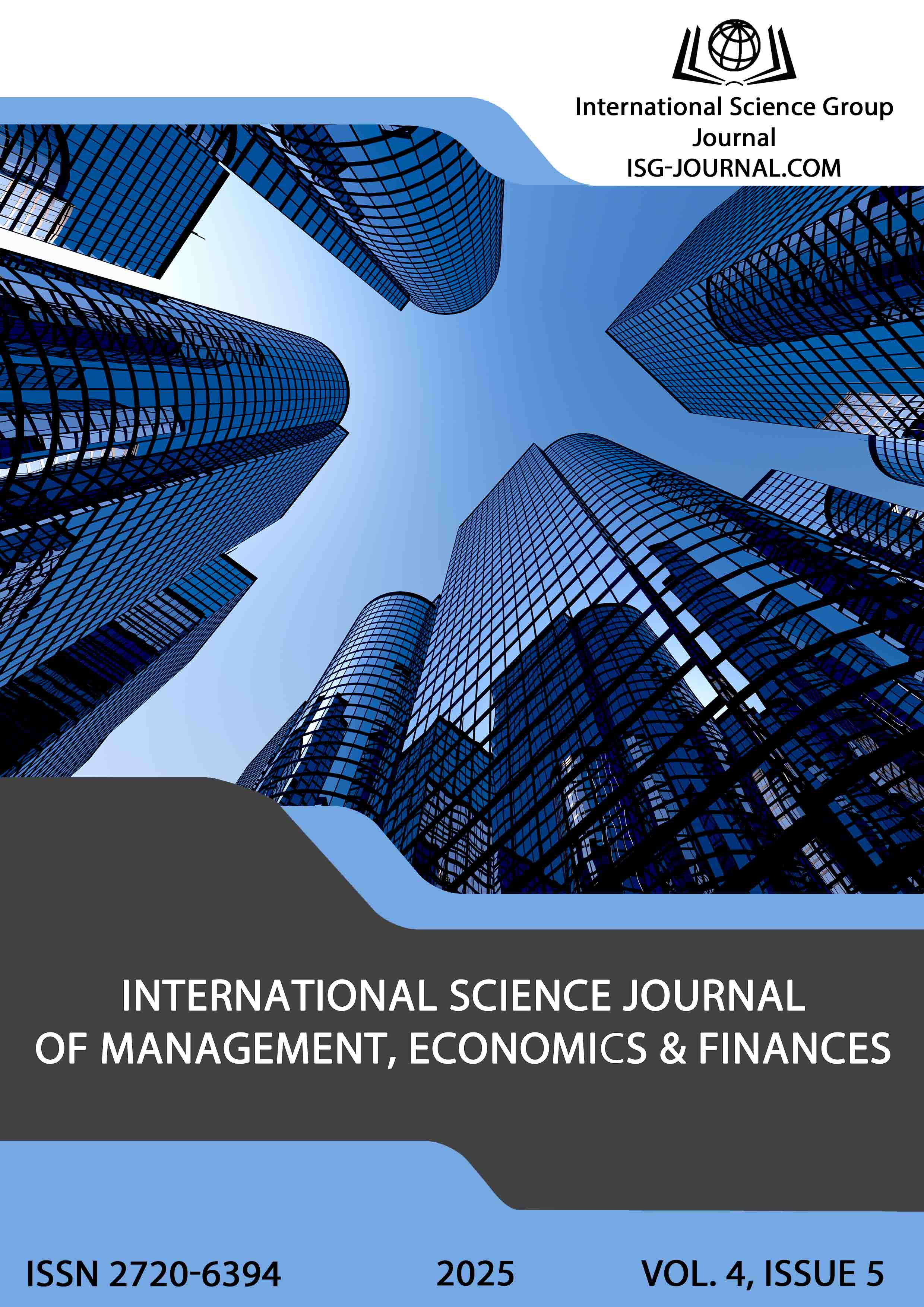The intellectual component in hybrid models of the innovation process: a conceptual analysis
DOI:
https://doi.org/10.46299/j.isjmef.20250405.01Keywords:
innovation process, open innovation, closed innovation, intangible assets, intellectual property, innovation modeling, innovation activity, technology transferAbstract
In the contemporary dynamic economic environment, where innovation is a key factor in competitiveness, understanding and optimizing innovation processes have become particularly important. This work is dedicated to an in-depth study of the current state and evolutionary trends in models for organizing innovation activities. We conducted a critical analysis of existing approaches, which allowed us to identify their conceptual and practical shortcomings, such as limitations in accounting for the specifics of intellectual assets and inflexibility to changing market conditions. Based on this comprehensive analysis, we developed a unique proprietary hybrid model of the innovation process that addresses the identified gaps. This model synthesizes the advantages of both open and closed innovation strategies, creating a synergistic effect. Its central feature is the integrated intellectual component, which underscores the critical role of intangible assets—such as patents, know-how, and copyrights—at all stages of the innovation cycle, from idea generation to commercialization. The proposed model not only considers the creation and protection of intellectual property but also provides for effective mechanisms for its management and monetization. To facilitate the practical implementation of this innovative model, we developed a detailed step-by-step algorithm for its use. This algorithm includes clear instructions and recommendations for adapting the model to the specific conditions of various organizations and industries. It serves as a valuable tool for managers and strategists seeking to enhance the efficiency of innovation processes, minimize risks, and maximize returns on investments in intellectual capital. Thus, this research offers not only a theoretical understanding but also a practically oriented solution to modern challenges in innovation management.References
Azarova, A. O. (2011). Intelektualnyi kapital yak vyznachalnyi faktor innovatsiinoho rozvytku pidpryiemstva [Intellectual capital as a determining factor of enterprise innovation development]. Visnyk Khmelnytskoho Natsionalnoho Universytetu. Ekonomichni Nauky, (2), 139-143.
Androshchuk, H. O. (2012). Innovatsiina diialnist: intelektualna vlasnist ta venchurne finansuvannia [Innovation activity: intellectual property and venture financing]. Medinform.
Chesbrough, H. (2003). Open innovation: The new imperative for creating and profiting from technology. Harvard Business School Press.
Chesbrough, H. (2006). Vidkryti innovatsii: Nova paradyhma upravlinnia innovatsiiamy [Open innovation: A new paradigm of innovation management]. Svitozliad.
Cohen, W. M., & Levinthal, D. A. (1990). Absorptive capacity: A new perspective on learning and innovation. Administrative Science Quarterly, 35(1), 128-152.
Davyrova, I. D. (2010). Innovatsiinyi rozvytok promyslovykh pidpryiemstv: teoriia i praktyka [Innovative development of industrial enterprises: theory and practice]. DonNUET.
Dovhan, L. P. (2007). Intelektualnyi kapital pidpryiemstva: formuvannia ta otsinka [Intellectual capital of the enterprise: formation and evaluation]. Tsentr Uchbovoi Literatury.
Dvir, J., & Singh, H. (2006). The value of relational capital. Journal of Business Venturing, 21(4), 407-422.
Dyer, J. H., & Singh, H. (1998). Strategic supplier segmentation: The next “best practice” in supply chain management. California Management Review, 40(4), 660-679.
Horonostaieva, A. M., & Chernyshova, I. H. (2014). Faktory uspishnosti innovatsiinoi diialnosti pidpryiemstva [Factors of enterprise innovation activity success]. Ekonomika ta Upravlinnia Pidpryiemstvamy, (3), 45-51.
Hrynyov, A. V., & Kaliuzhna, N. H. (2007). Upravlinnia innovatsiiamy: Navch. posib. [Innovation management: Study guide]. KhNEU.
Kuper, R. Dzh. (2013). Optymizatsiia innovatsiinoho protsesu: model “Vorota” [Optimization of the innovation process: the "Gate" model]. Znannia.
Saienko, S. I. (2013). Upravlinnia innovatsiinymy protsesamy na mashynobudivnykh pidpryiemstvakh [Management of innovation processes at machine-building enterprises]. Visnyk Natsionalnoho Tekhnichnoho Universytetu "KhPI". Seriia: Ekonomichni Nauky, 60(1032), 136-140.
Wheelwright, S. C., & Clark, K. B. (1993). Revolutionizing product development: Quantum leaps in speed, efficiency, and quality. Free Press.
Yeshchenko, P. S. (2009). Innovatsiinyi rozvytok ekonomiky: Navch. posibnyk [Innovative development of the economy: Study guide]. Tsentr Uchbovoi Literatury.
Downloads
Published
How to Cite
Issue
Section
License
Copyright (c) 2025 Nadiia Petrenko

This work is licensed under a Creative Commons Attribution 4.0 International License.






